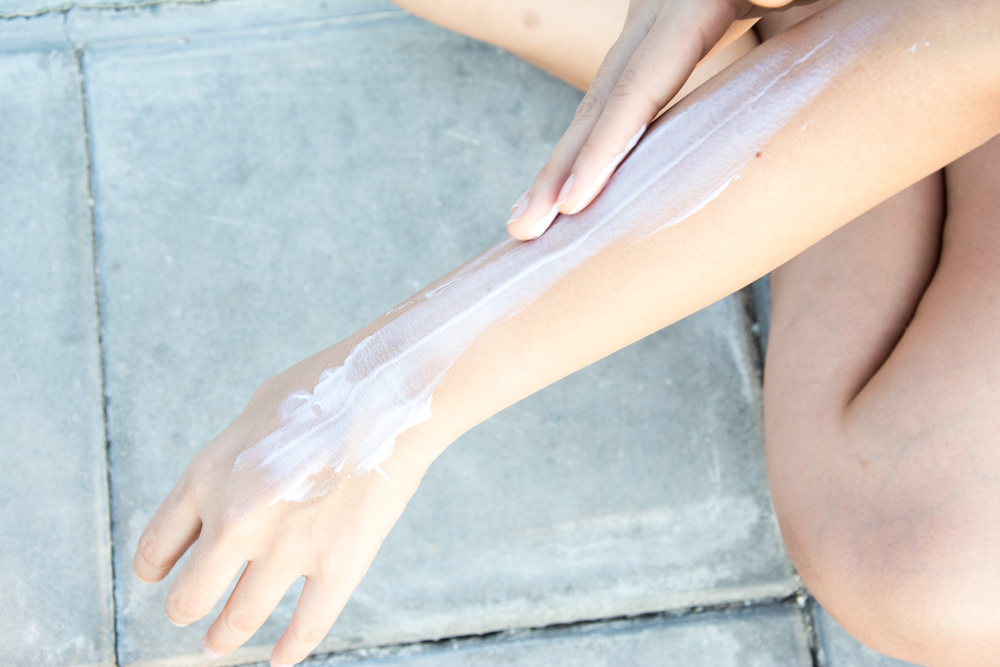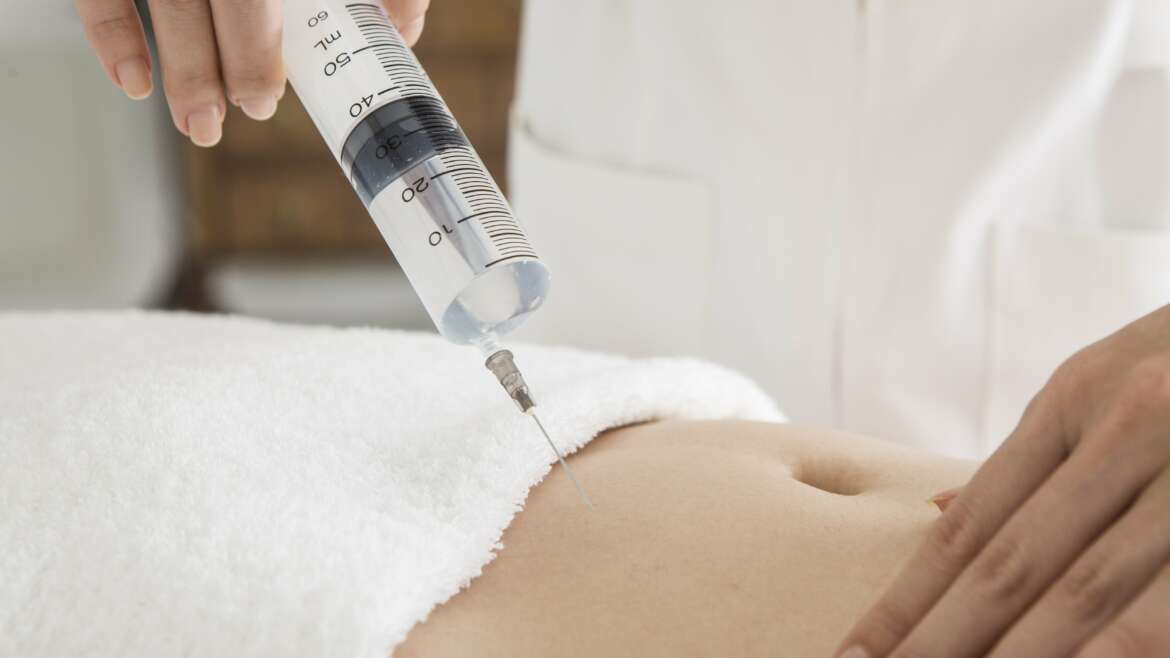- Razor bumps are small, itchy red bumps caused by shaving.
- Single-bladed razors may help prevent razor bumps, but not in all cases.
- Specific creams and ointments can be used to minimize irritation and discomfort.
- Laser hair removal can be pricey, but it will permanently solve the problem.
Hair bumps, razor bumps, razor burns, these are just a few of the terms used to describe what is better known clinically as pseudofolliculitis barbae (PFB).
In this article we cover everything you need to know to help prevent and treat this common skin concern.
What are razor bumps?
Razor bumps are small, (approximately 1-3 mm) red papules that form shortly after shaving, the result of inflammation and minute bacteria penetrating the shaved skin.
What causes razor bumps?
As the follicles regrow, they become trapped, creating ingrown hairs underneath the surface of the skin, which in turn cause the tender, often itchy red bumps to form. When pustules (pus-filled blister) appear on account of exposure to bacteria, the condition is then called folliculitis barbae (FB).
These red papules will likely either subside with time or become pustules. In the worst case scenario, they will mutate into keloids.
Who is prone to razor bumps?
So long as they shave, everybody is susceptible to razor bumps — male or female, young, older or elderly. And while this article is focused on facial razor bumps, they can and do appear anywhere on the body that is subject to being shaved.
Razor bumps tend to be itchy and uncomfortable – not to mention the visual aesthetic of dozens of bumps, which look remarkably like whiteheads, all over one’s face and neck.
Guys with curly hair are most prone to facial razor bumps as their hair naturally curls inward and grows back into the skin, creating the ingrown hair that eventually morphs into a razor bump.
The people most vulnerable to facial razor bumps are indisputably males of African origin or descent, this because of the higher likelihood they’ll have the curly hair which spawns the condition.
Various studies have also determined that there’s a genetic component that puts people of certain ethnicities at greater risk of developing razor burns. Resulting from a slight difference in DNA, some people have hair follicles that lack a certain type of keratin, leaving them more vulnerable to razor bumps than others.
» Are you suffering from razor burn in the pubic area? Learn what causes these small, red bumps and the best treatment options
Do single blade razors work better?
There are those who’ll tell you that avoiding PFB is as simple as shaving with a single-blade razor in the same direction as the hair grows. In fact, one manufacturer, Walker and Company, has even created a product called the Bevel razor, which was specifically designed in such a way that it allegedly won’t lead to razor bumps.
According to Tristan Walker, the co-founder of the company, a Bevel razor is the only thing anyone needs in order to keep razor bumps from developing.
Of course, not everyone is quite convinced that it’s all just a matter of switching to a Bevel or single-blade razor.
Los Angeles-based dermatologist Dr. Paul Yamauchi explains: “The condition stems from the structure of the hair follicle, which can be curved in many people. PFB is aggravated by shaving, as it can cause the sharp tip of shaved hair to grow back into the skin and results in a bump.”
Yamauchi believes it’s as much about the way one shaves as the razor itself.
“Patients affected by PFB should discuss ways to modify their shaving habits with their dermatologist,” he says. “It’s just not a one-size-fits-all situation: some patients will benefit from an electric razor, some do better with a multi-blade razor, while single-blade razors are preferred by others.”
Complications Arising from Razor Bumps
In more serious instances patients with chronic, hard-to-treat PFB can be struck with sycosis barbae. This most dramatic form of PFB is associated with cysts that connect to one another through the sinuses, transmitting infection and bacteria that can impact local skin areas.
The daily repetition required for most individuals to stay clean-shaven generally leads to an increased risk of scarring (keloids and/or indented scars), hyperpigmentation (dark marks), potentially permanent hair loss, and skin infections.
How to Prevent Razor Bumps
The very best way to deal with razor bumps and the skin irritation they cause is to avoid getting them in the first place. While this seems obvious, many sufferers don’t fully realize they’re not quite as helpless to the condition as they may think.
For starters, try to shave as infrequently as possible. On those occasions when you have little choice but to shave, following these simple instructions will reduce the likelihood of creating the ingrown hairs which lead to the bumps.
- Wet your skin with hot water.
- Apply a generous amount of shaving cream or unscented soap to your skin.
- Only use new, extra-sharp single blade razors of the highest quality.
- Shave in the direction your hair grows.
- Close your pores back up immediately after you’ve finished by applying a cold cloth to your face.
As a precaution, if you still have razor bumps from the last time you shaved you should really reconsider just how important it is that you shave that day. Not only will shaving over older bumps likely extend their life and potentially lead to scarring, shaving over razor-burned skin is usually quite painful.
Other precautions you can take to avoid razor bumps from developing include the following:
- Keep skin well-moisturized with topicals that are considered non-comedogenic (unlikely to clog pores) and with no agents that could potentially spawn an allergic reaction.
- Many people like applying aloe vera or petroleum-based topicals simultaneously with other home remedies like witch hazel, coconut oil, and tea tree oil.
- Wash with gentle cleansers using warm water. Some cleansers contain similar acids to those found in chemical peels, which can help to gently remove dead skin cells.
- If you aren’t comfortable shaving with a single blade razor, other options include using electric hair clippers or razors with attachments that don’t cut the hair directly against the skin’s surface.
- Be sure to keep all reusable clippers and attachments clean by closely following the sterilization instructions provided with the product’s packaging.
- Go to the spa for a facial. Exfoliating goes a long way towards repairing ingrown hair.
3 Steps to Treating Razor Bumps
Depending on the severity of the bumps, various treatments and medications (both prescription and over-the-counter) can sometimes make a world of difference to skin compromised by pseudofolliculitis barbae.
Here are a few tips and treatments commonly employed to manage the condition once the bumps have already formed.
1. Don’t scratch them.
Yes, as unbearable as it may seem sometimes, scratching itchy razor bumps only serves to spread bacteria around, including whatever germs you have on your hands at that moment. For this reason it’s wise to avoid touching your razor bumps in general, let alone scratching them.
2. Use the right topical creams and ointments.
Apply gels or creams that contain lidocaine and/or bacitracin to the affected area, both when treatment is required and as a preventative measure.
Lidocaine is found in many aftershave products because it prevents itching and irritation, while bacitracin kills bacteria. Hydrocortisone and other antibacterial creams can help lessen inflammation and redness. Retin-A cream is also effective in this capacity.
Often, topical antibiotics, like clindamycin, and topical retinoids, like tretinoin or tazarotene, are prescribed for the treatment and prevention of hair bumps. Caution should be taken when applying retinoids, however, as they can cause dry skin during the initial stages of use.
On rare occasions, topical steroids are used temporarily to combat the inflammation and itch stemming from razor bumps.
3. When all else fails, try antibiotics — or natural supplements.
Oral antibiotics can also be prescribed to act as anti-inflammatories and to reduce bacterial load on the skin. Doxycycline and minocycline are commonly prescribed, similar to acne treatment protocols.
For a more holistic approach, turmeric, a natural anti-inflammatory, is recommended and can be consumed in foods or taken in supplement form.
» It is possible that you are suffering from razor bumps and cystic acne. Read more about the symptoms of cystic acne and the best ways to treat it
Laser Hair Removal: Expensive, but Effective
Another treatment option is laser hair removal. With this procedure a powerful laser beam penetrates under the surface of the skin to burn hair follicles and their roots at the source, stunting their growth for several months.
Each time you return for a treatment your hair will grow back a little slower and thinner, until eventually, after several sessions, the results will be permanent.
While this may seem like a fairly painful and expensive solution, according to the American Society of Plastic Surgeons (ASPS), the average cost is approximately $300 per session. Which again might seem a little pricey, but when you consider it’s a long-term solution that will free you from shaving altogether for at least a quarter of a year, essentially an entire season at a time until the results become permanent, laser hair removal starts to seem a little more pragmatic.
Think of the money you’ll save no longer having to purchase expensive replacement blades every month.
When to Seek Professional Skin Care
The bottom line is that pseudofolliculitis barbae is a treatable condition. It’s really more a matter of how you choose to address it. Outside of growing a beard and foregoing shaving altogether (another viable option), it’s recommended that you shave as little as possible. And when you do, closely adhere to the instructions provided above.
Depending on the severity of one’s condition, there are several effective treatments available to address the problem – be it over-the-counter products, laser hair removal, or a course of prescription medications.
Should you have razor bumps that you feel merit professional attention, it’s recommended that you contact a nearby board-certified dermatologist and schedule an appointment to discuss the best course of treatment for your specific situation.
» Zwivel has compiled an extensive list of cosmetic doctors across the United States. Use it to find a competent dermatologist in your area.









